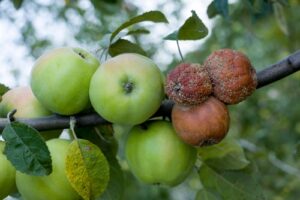Applications
- Extends the shelf life of fresh produce, juices, and fermented foods by reducing enzymatic browning.
- Reduces reliance on chemical additives like sulfur dioxide in food processing.
- Enhances food quality by preventing undesirable color and flavor changes.
Advantages/Benefits
- Prevents food browning by targeting the dopamine biosynthetic pathway in specific plant tissues instead of conventional PPO gene inhibition throughout the entire plant
- Avoids the accumulation of tyramine (a compound linked to negative health effects) to improve food safety
- Reduces the need for chemical preservatives, such as sulfur dioxide
- Improves food quality while maintaining natural biochemical balance
Background
Food browning leads to significant waste in the agricultural and food industries, affecting shelf life, quality, and consumer appeal. Traditional solutions rely on chemical additives or polyphenol oxidase (PPO) inhibition, but these methods can impact food safety and taste. Recent gene-editing approaches targeting PPOs have reduced browning but unexpectedly increased tyramine levels, a compound linked to health risks. Berkeley Lab researchers have developed a novel bioengineering approach that prevents browning by modifying the dopamine biosynthetic pathway in specific plant tissues instead of solely targeting PPOs. This method maintains food quality, extends shelf life, and avoids harmful byproducts, providing a safer and more effective alternative to existing solutions.
Technology Overview
Berkeley Lab researchers have developed a bioengineering approach to prevent food browning by modifying the dopamine biosynthetic pathway instead of solely inhibiting polyphenol oxidase (PPO) enzymes. Unlike conventional methods that inhibit polyphenol oxidase (PPO) enzymes, often leading to the accumulation of tyramine (a compound associated with migraines and medication interactions), this approach modifies dopamine synthesis without producing harmful byproducts. Using CRISPR/Cas9 gene editing, researchers successfully silenced tyrosine decarboxylase (TyDC) genes, preventing the conversion of tyrosine into tyramine and dopamine in specific plant tissues. Plants with silenced TyDC genes showed over 95% reduction in browning while maintaining normal growth and biochemical balance. The method offers a safer, more effective solution for preserving the quality of fruits, vegetables, and processed foods. By addressing both enzymatic and non-enzymatic browning pathways, this technology provides a scalable, sustainable solution for the agricultural and food industries.
Development Stage
Validated in pilot study
For More Information:
N/A
Principal Investigator(s)
- Trent Northen
- Yezhang Ding
- John P. Vogel
- Yi Zhai
- Suzanne Kosina
Status
Patent pending
Opportunities
Available for licensing or collaborative research

